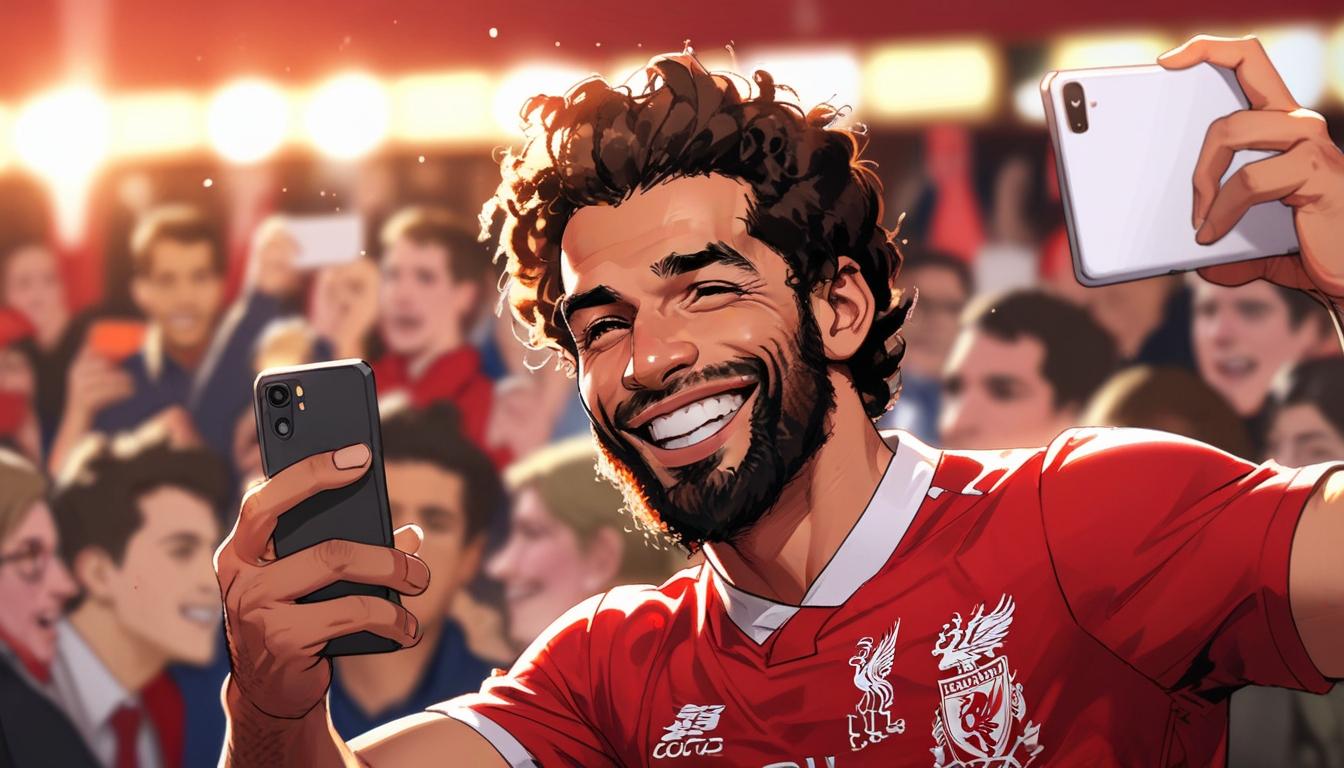In a recent Premier League match between Liverpool and Tottenham Hotspur, an event unfolded that captivated not only the hearts of passionate Liverpool fans but also sparked discussions about the intersection of sports and brand partnerships. The match, held at Anfield, marked a significant moment for the club as it celebrated a league title for the first time in 35 years.
Among the highlights was Mohamed Salah, who has been hailed as a crucial figure in Liverpool’s success this season. The Egyptian forward, known for his infectious smile, shared a special moment with fans, where he posed for selfies. This interaction was reportedly captured on a Google Pixel phone, aligning with the technology company’s sponsorship of Liverpool FC.
The occurrence has drawn mixed reactions. Observers noted that while some may view the moment as genuine and joyous, others suspect it could be a well-orchestrated piece of marketing collaboration. Certain commentators express concerns that commercial interests could permeate genuine fan experiences—traditionally regarded as sacred within sports culture.
Reflecting on the event, a seasoned Liverpool supporter noted the dual nature of such moments. “Whether this was a moment of pure magic or a carefully contrived piece of product placement, there is no doubt that the moment just worked beautifully,” the fan remarked in an article for Little Black Book. The sentiment suggests that, if any branding involvement was present, it was executed with finesse, enhancing rather than detracting from the celebratory atmosphere.
This balancing act—where brand interactions intersect with fan engagement—echoes past instances in popular culture, such as the much-discussed Glastonbury moment involving musicians Dave and Alex, where speculation arose regarding the authenticity of their interaction. The Liverpool encounter similarly illustrates the delicate path brands must navigate when entering sporting or cultural spaces.
Ultimately, the true assessment of the moment rests in the hands of the fans. Their perceptions and reactions will determine whether they view brand integration as an asset or an intrusion. As sports increasingly attract commercial entities, the dialogue around these intersections will likely continue, reflecting broader societal themes in fan engagement and corporate sponsorship.
Source: Noah Wire Services
